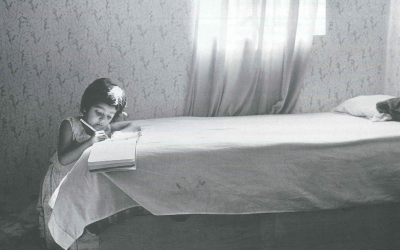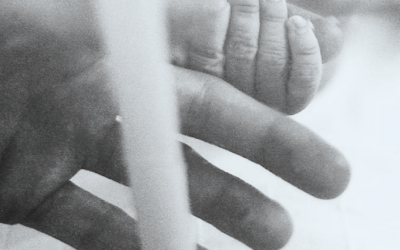Corruption and Democracy
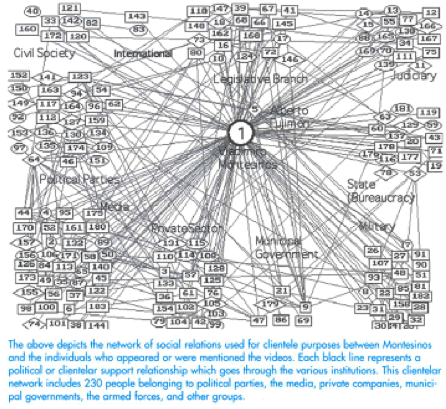
Despite more than ten years of democratic systems in Latin America, why is it that corruption hasn’t decreased in the region? In Peru, videotapes filmed at the National Intelligence Secretariat, controlled by Vladimiro Montesinos, provide dramatic evidence of the clientelistic networks plaguing democratic institutions in Peru. The extraordinary tapes demonstrate how an entrepreneurial and political elite captures democratic institutions and puts them at the service of their interests. The study explains how public institutions work where high-level corruption counterbalances democracy, and, suggesting explanations for the entire region.
CORRUPTION IN LATIN AMERICA
Regional freedom of press has revealed abuses of power by rulers and entrepreneurs, but demands for the control of corruption have remained unsatisfied. Studies of 102 countries by International Transparency have found that Latin American countries evidence situations of high level corruption. Chile (ranking slightly above the U.S.) is the only significant exception, while Uruguay, Trinidad and Tobago and Costa Rica show an acceptable performance.
Corruption in Latin America is organized and systemic, non-isolated and random. This kind of exchange between political, economic and social systems does not respond to a pluralist model, but to the neo-corporative model of democracy where consultation and co-administration entail the basis of the political-economic system.
I intend to analyze these kinds of exchanges by using a rich source which, for the first time, allows for an intimate look into the world of politics existing behind closed doors. The “Vladivideos” consist of video recordings of meetings, mainly of a secret nature, which took place between Vladimiro Montesinos, Fujimori’s closest advisor, and a highly varied group of personalities from the Peruvian society. It is the first time there is a source of information to study the corrupt exchange as it takes place. These videos contain a rich source of data on the invisible networks forming the infrastructure of corrupt transactions.
A sample of 110 “Vladivideos?” was used to explore the social structure of Vladimiro Montesinos’ personal network and the mechanisms used to create, manipulate and use his “social capital” in order to increase his personal and political power. Although, due to sampling considerations, formal methods of analysis of networks cannot be used, mapping tools will be used to illustrate the scope and the diversity of his clientele network. The qualitative analysis will also be used to show the various forms in which a new institution was built where corrupt transactions were normalized.
The videos register a number of conversations held between Montesinos and a variety of political, entrepreneurial, media, and judicial figures.
FUJIMORI’S RE-ELECTION
One of the cases exhibited by the videos is that of Fujimori’s re-election. Montesinos had a long term plan to control Peru that included obtaining a third term for Fujimori. To do so he needed to make an amendment to the Constitution through either a 2/3 majority vote in Congress or through a popular referendum.
He knew people were against the reform, so he had to control the JNE (Jurado Nacional de Elecciones) (National Elections Jury) in order to block the referendum. Montesinos made sure that four out of the five members of the JNE would respond to his dictates. We found evidence in this video sample that at least two of these individuals received compensation or favors for voting according to his directions. To obtain the necessary Congressional majority in the Congress for the reform, Montesinos negotiated with banks, the media and opposition leaders. By using his judicial contacts, Montesinos made sure to have the loyalty of the financial entity’s authorities.
The heavy sums of money ensure signed contracts are subscribed to guarantee television strategy. In addition to determining programming, ournalists criticizing the regime are excluded and any broadcasting of candidates from the opposition is denied. Financial and legal problems make the media vulnerable. He captures Channel 5 by assisting them in a complicated lawsuit through his contacts in the judiciary.
Montesinos summarizes in a video his views on press freedom:
Montesinos Torres: We either give them airtime or we eliminate them. For instance yesterday, after that thing of the pact, Andrade (opposition candidate) gave a press conference. No channel aired the press conference. It never existed. He gave the conference. For whom? For the journalists and for those who watched a little bit of the CN. None of the remaining channels aired the interview.
Montesinos also went after the Congress to attain a constitutional amendment. He needed 80 votes in Congress, but could only count on 67. Thus, he paid Congressmen off and helped with the campaigns of opposition members so that they would vote favorably.
For example, the video of opposition politician Alberto Kouri’s shows he switched sides because Fujimori provided him with a monthly stipend. Kouri was the first known case of vote-buying, and the one that ended the regime. In the video, Kouri is observed receiving the money and putting it away in his jacket. In another “Vladivideo,” Montesinos says he offered him 5000 dollars per month but that Kouri argued over the amount.
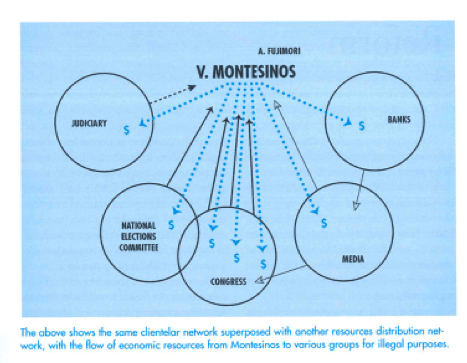
In order to build up the network generated by Montesinos, we encoded in the system the transcripts of each video, the various encounters as well as any mention on the relationship: enterprises, friends, commercial associations, political associations, etc. We made a sociometric data base on these relationships and we used it to illustrate the scope and diversity of Montesinos’ social relations.
Social networks are made up by multiple relations formed in all social groups of any size. These connections are formed for a variety of purposes: to exchange information, trust, resources and support, connecting individuals to others and determining available options for action. In addition to linking individuals, the distribution of relations in a group determines how the social activity of such group is organized. Collectively, these relations form a structure that determines the actions of all its members.
Political clientelar relations are defined as a reciprocal relationship between patron and client, defining patron as the person using his influences to assist and protect someone else, the client, and the latter provides in exchange certain services to his patron. In clientelar relations the patron has the power and the contacts to grant benefits that the counterpart (client) wishes to have. In return for these benefits, the patron obtains allies.
Montesinos destroys the autonomy of the various state entities by promoting officers who owe their appointment to him. Thus, they are vulnerable to his requests. A feature repeated in Montesinos’ structure of relations is trust and cooperation based on a personal knowledge (“friends for life,” “of the same class,” “we studied together”).
I brought him here because he’s a friend of mine from school. We were classmates at Colegio Independencia. And what’s better than helping friends from my own class? Mainly for two reasons: First, that there is a relationship between us since we were kids; and second, that one trusts. That’s what’s important, you see?
Reprocity, the obligation to help after having received a personal favor, is also used by Montesinos to generate loyalty and duty.
Montesinos Torres: We will help her. You give me difficult tasks?
Mr. Delgado Parker (owner of a TV channel): But, of course, in return I am at your disposal for anything you like.
The networks create the social capital.
CORRUPTION AND INFORMAL NETWORKS
Both the OECD and the World Bank have used the perspective of the Principal Agent Client (PAC) to study the causes and the operation of corruption. Based on a political economy model, the PAC theory emphasizes on the rational behavior of the economy and focuses on the structure of the institutional incentives of political sciences. Corruption occurs when the agent (public employee) takes possession of some public benefit, either financial or of any other nature, and does not remit it to the principal (national state).
This approach to corruption implies that the agent makes a previous estimation on the profitability. Robert Klitgaard proposes an explanation for the participation in corrupt acts through a “decision tree” whereby the agent chooses from two options presenting different combinations of benefits, costs and possible sanctions (Controlling Corruption, Berkeley, CA: University of California Press).There are three dimensions in public bureaucracy affecting corruption levels: monopoly, discretion and accountability (rendering of accounts or bureaucratic control). The equation proposed by Klitgaard is: M (monopoly) + D (discretion) – A (Accountability) = Corruption. Public policies are then evaluated based on their propensity to increase the competition (thus minimizing the monopoly), to reduce the discretion and to increase the bureaucratic control on the actions of public employees. When the costs associated with corruption increase, corruption decreases over time since agents perceive the threat of sanctions.
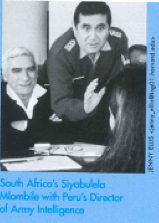
However, this perspective depends too heavily on the formal characteristics of the organizations to determine monopoly, discretion and accountability’s levels. To simplify we could conceptualize these factors according to their formal organizational structure: who directs who or which responsibilities fall under which job positions. But if there is something clear when corruption is studied, is that corrupt activities flow through relations that are not defined by the formal organization and that respond to a non-formal systemic logic. The assumption that the formal organizational structure determines incentives and opportunities overlooks the fact that personal relations are critical to participation in corrupt activities which, due to their illegal nature, flow through informal channels. If this supposition is correct, the formal structure of the State explains only part of the phenomenon. In order to understand how corruption works an understanding on the structure and function of informal relations (social networks).
In Peru, corruption occurs not due to a lack of bureaucratic controls or to an excessive administrative discretion, but as the result of a political intervention—intentional and systematic—in the State. A complex system of exchange of political resources creates networks of organized corruption that exist despite formal regulations or bureaucratic controls. These social networks are the basis of the institutional continuity that diverts reforms and provides impunity to those taking part in corruption.
The “Vladivideos” network reveals the way in which institutions are captured and they explain the mechanisms which enable them to keep a balance in high corruption. Even though it is premature since this article is an advance of a research work in process, the Montesinos case suggests the following:
- The study of corruption cannot be reduced to isolated exchanges.
- Corrupt exchanges respond to a structure of relationships through which a different set of behavioral codes flows.
- Although Montesinos tapes the encounters, the network shows relationships among the various nodes, which predicts its continuity.
- Reform efforts that focus exclusively on formal organizational characteristics will eventually fail. Bad networks can subvert the most carefully organized bureaucracy.
- Destroying bad networks is not enough. Good networks must replace them.
Fall 2002
Luis Moreno Ocampo will be a Robert F. Kennedy Visiting Professor at the Harvard Law School in spring 2003. Ocampo played a crucial role in the trials of the Argentine military related to Argentina’s democratic transition in the 1980s. He received his law degree from the University of Buenos Aires Law School. Founder and president of the Argentine Civil Society Organization, Poder Cuidadano, he is also Director of Transparency International for Latin America and the Caribbean.
Related Articles
Editor’s Letter: Democracy
Ellen Schneider’s description of Sandinista leader Daniel Ortega in her provocative article on Nicaraguan democracy sent me scurrying to my oversized scrapbooks of newspaper articles. I wanted to show her that rather than being perceived as a caudillo
Battro Named to Pontifical Academy
Antonio M. Battro M.D., Ph.D. has been named to The Pontifical Academy of Sciences, the oldest science academy in the world, established by Galileo 400 years ago. Battro, Robert F. Kennedy…
Entre los panales y el poder
Cuando Jacqueline van Rysselberghe fue informada en Noviembre último que ella debería dejar su puesto como alcaldesa de Concepción, una de las ciudades mas grandes e…

